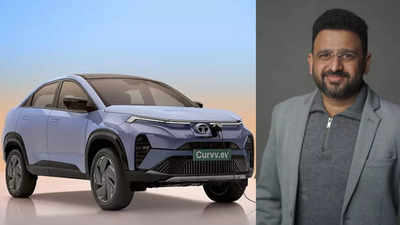Based on an interaction conducted by Arpit Mahendra.
Tata Motors continues to dominate India’s electric passenger vehicle market with the widest EV portfolio and shows no signs of slowing down. The company kicked off 2025 on a high note, showcasing multiple models at the Bharat Mobility Global Expo, including the much-anticipated Harrier EV and the revival of the iconic Sierra. In a conversation with TOI Auto, Vivek Srivatsa, Chief Commercial Officer, Tata Passenger Electric Mobility (TPEM), shared his thoughts on India’s evolving EV ecosystem, the potential of subscription-based battery models, and Tata Motors’ strategic vision for electric mobility.
Battery subscription models: A welcome move, but challenges remain
Discussing the recently introduced battery subscription model in the Indian EV industry, Srivatsa acknowledged that it has made EVs appear more financially accessible. However, he pointed out that its practicality for customers remains uncertain.
“It did make the visual price attractive, but more importantly, it brought much-needed attention towards EVs, getting more people to consider them,” Srivatsa said. “It is a financial product that we had considered a few years ago, but we believed its implementation might not be easy for customers. It’s like putting a low price in an ad, but when you visit the showroom, the product is either unavailable or has a long waiting period.”
While Tata Motors has no immediate plans to introduce a similar model, Srivatsa did not rule out the possibility, stating, “We can implement something similar anytime. It’s more of a financial product than anything else. However, we’ll have to see how things unfold. I really hope this move converts more EV considerers into actual EV owners.”
When asked about Indian car buyers’ attitudes towards vehicle ownership versus subscription models, Srivatsa explained that while Indian consumers are emotional about their cars, they are also highly value-conscious.
“Subscriptions and leases will pick up in the long run, but they need to be more financially attractive. Indians are emotional buyers, but they are also financially prudent. Right now, leasing or subscriptions don’t make financial sense to them,” he explained.
He drew an analogy with renting versus owning a house, saying, “There are many who prefer renting over buying, seeing it as paying for a service rather than a product. Similarly, for car subscriptions to work, they need to reach a threshold where the cost aligns with consumer expectations. Until then, most buyers will prefer outright ownership.”
EV growth in India: Steady adoption, no slowdown
With reports of certain global markets rolling back their EV projections and some first-time EV buyers in India reconsidering their next purchase, Srivatsa remained optimistic about India’s EV trajectory.
“A significant number of EV owners in India are highly satisfied. In fact, most people who switch to EVs rarely go back to their ICE vehicles, even for a single drive,” he said. “More than 80% of our customers want to upgrade to a bigger EV within the portfolio, which shows that the shift is happening.”
On global slowdowns in EV adoption, he said, “Aggressive targets were set, and economic factors like subsidies and infrastructure played a role in adjustments. But there is no ambiguity. EVs are the only solution for zero-carbon mobility. Other alternatives are just stopgap solutions.”
He believes India will see a steady rise in EV adoption rather than fluctuations. “We take time to adopt new technology, but once we cross the threshold, the growth will be exponential. I expect 2025 to be the turning point, as consumers realize that for the price they pay, EVs offer much better value and experience.”
Tata Motors’ EV roadmap: Strong growth ahead
Speaking about Tata Motors’ EV sales, Srivatsa revealed that EVs currently make up 12% of the company’s portfolio, with some individual models reaching 20-25% penetration. “By the end of the decade, we expect EVs to contribute over 30% of our sales, possibly even higher,” he said.
When asked about Tata Motors’ upcoming launches, Srivatsa confirmed that the Harrier EV would arrive soon. “You will see the Harrier EV very soon, within the first six months of this year,” he said. “And the Sierra EV will follow in the next six months.”
With these two launches, the company will further expand its largest EV portfolio in India with competitors such as JSW MG Motor India also picking up pace. At present, Tata Motors commands a healthy 38 percent market share in the mass-market EV segment in India.
